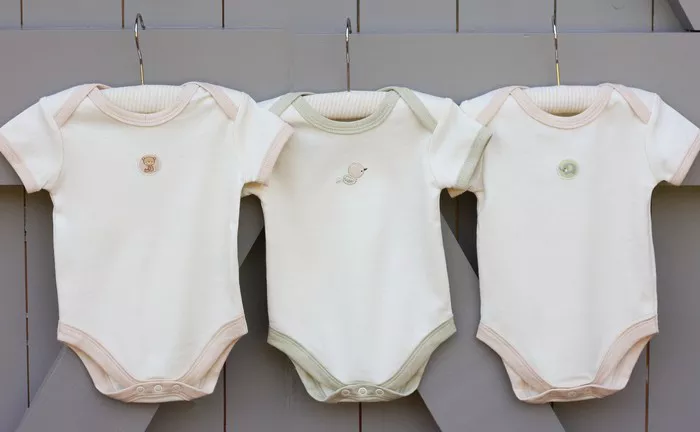Welcoming a newborn into the family is a joyous occasion, accompanied by a flurry of preparations to ensure their comfort and safety. One essential aspect often overlooked is properly washing newborn clothes before they are worn for the first time. While these tiny garments may appear pristine, they can harbor dust, chemicals, and irritants from the manufacturing process. This comprehensive guide outlines the importance of washing newborn clothes separately and provides step-by-step instructions for ensuring their cleanliness and safety.
Introduction to Washing Newborn Clothes
Newborns have delicate skin that is more susceptible to irritation and allergic reactions. Therefore, it is crucial to wash their clothes before use to remove any potential irritants accumulated during manufacturing, transportation, or storage. Failure to do so may expose the baby to chemicals, dyes, and residues, leading to discomfort, rashes, or even more severe skin reactions.
Washing newborn clothes separately from the rest of the laundry is essential to prevent cross-contamination with adult clothing, which may carry dirt, bacteria, or harsh detergents. By dedicating a separate wash load to baby clothes, you can ensure they receive the gentle care and attention they require.
Choosing the Right Detergent
Selecting the appropriate detergent is paramount when washing newborn clothes. Opt for a non-bio detergent, which is free from enzymes and harsh chemicals that can be harsh on delicate skin. Non-bio detergents are formulated to be gentler and milder, reducing the risk of irritation or allergic reactions.
Additionally, choose fragrance-free and liquid detergents over powdered ones, as they are less likely to leave residues or cause discomfort. Fragrances and perfumes can be irritating to sensitive skin, so it’s best to avoid them altogether when washing baby clothes.
Pre-Washing Preparations
Before starting the washing process, take the time to inspect the garment care labels on newborn clothes. These labels provide valuable information on the recommended washing temperature, drying instructions, and any special care requirements.
Sort the clothes by color and fabric type to prevent colors from bleeding or fabrics from being damaged during the wash cycle. Separating whites from colors and delicate fabrics from sturdy ones ensures that each item receives the appropriate treatment.
Washing Temperature
When washing newborn clothes, it’s advisable to use a temperature setting between 30 and 40 degrees Celsius. This temperature range effectively removes dirt and stains while being gentle on delicate fabrics. Additionally, washing at lower temperatures is more energy-efficient and helps preserve the integrity of the clothes.
In cases where newborn clothes are heavily soiled or contaminated with bodily fluids, a higher washing temperature may be necessary to ensure thorough cleanliness and hygiene. However, always refer to the garment care labels for specific temperature recommendations to avoid damaging the fabrics.
Using Fabric Softener
While fabric softeners can impart a pleasant scent and softness to clothes, they may not be suitable for newborns’ delicate skin. Some fabric softeners contain additives that can strip flame-retardant properties from baby clothes or cause skin irritation.
If you choose to use fabric softener, opt for a gentle, hypoallergenic formula specifically designed for sensitive skin. Alternatively, consider using natural alternatives such as white vinegar or baking soda, which can soften clothes without leaving residues or fragrance.
Drying Newborn Clothes
Proper drying is essential to ensure newborn clothes remain soft, clean, and free from wrinkles. Whether air-drying or using a dryer, take care to follow these guidelines:
Air-drying: Hang newborn clothes outdoors or indoors on a drying rack to air-dry naturally. Avoid direct sunlight, as it can cause colors to fade and fabrics to deteriorate.
Using a dryer: If using a dryer, select a low heat setting to prevent shrinkage or damage to delicate fabrics. Use dryer balls or clean tennis balls to fluff the clothes and reduce drying time.
Regardless of the drying method chosen, consider adding an extra rinse cycle to remove any lingering detergent residues thoroughly.
Post-Washing Care
After washing and drying newborn clothes, perform a thorough inspection for any remaining stains, residues, or irritants. Treat stains promptly using gentle, baby-safe stain removers or natural alternatives like lemon juice or baking soda.
Store clean baby clothes in a clean, dry environment away from dust, moisture, and direct sunlight. Use breathable storage containers or garment bags to maintain freshness and prevent contamination before use.
Safety and Comfort
When selecting newborn clothes, prioritize comfort, safety, and quality. Choose garments made from soft, breathable materials like organic cotton, bamboo, or linen to minimize the risk of skin irritation or allergic reactions.
Before dressing the baby in new clothes, wash them using the guidelines outlined in this article to remove any potential irritants or contaminants. Pre-washing also helps soften fabrics and ensures a comfortable wearing experience for the newborn.
In conclusion, washing newborn clothes for the first time requires careful attention to detail and adherence to best practices for cleanliness and safety. By following the steps outlined in this guide, you can ensure that your baby’s clothes are clean, fresh, and gentle on their delicate skin, providing them with the comfort and protection they deserve.


